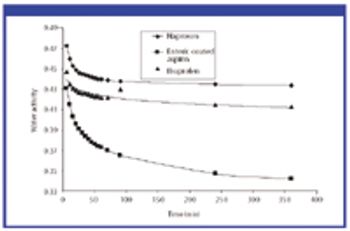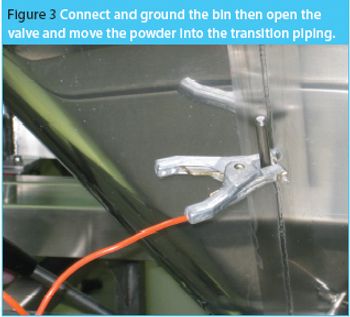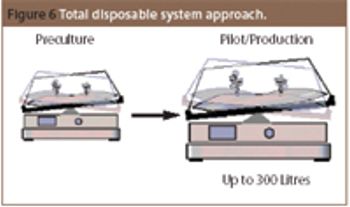
Princeton, NJ (Feb. 15, 2007)-Ranbaxy Inc., confirmed that federal officials conducted a search of its New Jersey offices on Feb. 14, 2007 and commented on its reported plan to acquire Merck's generics business.

Princeton, NJ (Feb. 15, 2007)-Ranbaxy Inc., confirmed that federal officials conducted a search of its New Jersey offices on Feb. 14, 2007 and commented on its reported plan to acquire Merck's generics business.

Hafnarfjordur, Iceland (Feb. 13)-Generic drug manufacturer Actavis acquired the active pharmaceutical ingredient (API) division of Sanmar Specialty Chemicals, Ltd. (SSCL), a subsidiary of the Sanmar Group.

InformexUSA, San Francisco (Feb. 14?16)-Several contract manufacturing organizations (CMOs) and technology providers used InformexUSA to announce plans to expand manufacturing capabilities, increase service offerings, and ramp up other investments.

Geneva, Switzerland (Feb. 16)-During a two-day meeting, the World Health Organzation announced ?encouraging progress? in the development of a pandemic influenza vaccine but admitted that the industry still ?lacks the manufacturing capacity to meet potential pandemic influenza vaccine demand.?

A security technology, previously exclusively reserved for use by government organizations has become commercially available with major pharma manufacturers eager to adopt the device.

Pall Life Sciences, product profile

InformexUSA, San Francisco (Feb. 12?Feb. 14)-Custom manufacturers of active pharmaceutical ingredients and intermediates are gathered at InformexUSA this week, with companies announcing investment plans and unveiling new technology

InformexUSA, San Francisco (Feb. 14)-The Synthetic Organic Chemical Manufacturers Association is launching a new sustainable chemistry initiative, the International Center for Sustainable Chemistry.

BioProgress plc and Magenta Oral Dose Design, a business unit of FMC Corporation, have finalized restructuring agreements regarding the licensing of NRobe technology.

InformexUSA, San Francisco (Feb. 14)-NPIL Pharma unveiled a $100-million investment program in formulation development and manufacturing services.

InformexUSA, San Francisco (Feb. 14)-Almac Sciences plans to collaborate for cytotoxic fill-and-finish services with the Center for Pharmaceutical Science and Technology (CPST) at the University of Kentucky.

Washington, DC (Feb. 14)?A congressional team has reintroduced the ?Access to Life-Saving Medicine Act,? which establishes a process through which the US Food and Drug Administration can approve generic copies of biologic drugs.

Distribution and collaboration agreements in biopharmaceutical purification

Washington, DC (Feb. 7)-The Synthetic Organic Chemical Manufacturers Association (SOCMA) submitted comments to the US Department of Homeland Security in response to proposed DHS regulations on chemical site security, asking DHS to take into consideration the unique nature of the specialty batch manufacturing sector.

Washington, DC (Jan. 26)-The US Department of Health and Human Services has granted targeted liability protections for manufacturers of a vaccine to prevent a pandemic of influenza A (H5N1).

New York, NY (Jan. 31)-Pfizer, Inc. scored a victory over Synthon IP in a patent infringement lawsuit over the manufacturing process for ?Norvasc? (amlodipine).

St. Louis, MO, (Feb. 8)-SAFC, the custom manufacturing and fine chemicals unit of Sigma-Aldrich Corporation, is seeking to build a footprint in Asia, eying possible acquisitions in India and China.

Osaka, Japan (Feb. 2)-Tanabe Seiyaku Co. Ltd. and Mitsubishi Pharma Corporation agreed to merge, with the closing planned for merger scheduled to take effect Oct. 1, 2007.

"Quality by design" (QbD) and "quality risk management" at long last seem to be moving from the buzzword stage to becoming important influences on drug development and manufacturing. A series of quality standards issued by the International Conference on Harmonization (ICH) is encouraging the adoption of common quality-based drug manufacturing approaches designed to reach the "desired state" of drug manufacturing (i.e., more efficient, agile, flexible operations that can reliably produce high-quality drug products with less regulatory oversight). These developments reflect increased pressure to make pharmaceutical manufacturing more efficient and less wasteful and to encourage regulators in all regions to focus on the most critical issues affecting product quality and patient safety.

The role of micro-biological testing in real-time release is too important to ignore.

The objectives of this study were to prepare and characterize inclusion complexes of lovastatin with hydroxypropyl-β-cyclodextrin (HPβ-CD) and to study the effect of the complexes on the dissolution rate of lovastatin (LVS). The findings suggest that LVS's poor dissolution profile can be overcome by preparing its inclusion complex with HPβ-CD.

It's what's on the outside that counts, too.

For solid oral-dosage forms, water testing usually is performed to control the chemical, physical, or microbiological properties of the drug product. Measurements of total water as made with Karl Fischer (KF) techniques is not needed and water-activity often will provide a better correlation with changes in chemical, physical, or microbiological properties than KF techniques. In these cases, water activity testing can easily replace KF testing. Water-activity measurements are nondestructive, require little labor, and the equipment required is generally inexpensive. Only a few simple checks are needed to ensure the validity of measurements. Strategies for implementing water activity testing are described.

The same phenomena that create lightning and thunderstorms are around us every day, producing incredibly high voltages, which cause sparks and shocks. Static electricity is a mighty force. Each year excessive electrical charge build cause explosions in the grain industry.1 Look around any flammable storage area and you will see both grounding bars on the wall and cables, from the grounding bars connected to the drums of solvents. Take any material safety data sheet (MSDS) for a powder and look in section V; it highlights that any dry powder has the potential to attract and store a charge.

Over the past decade, disposable technologies have become a reality in biotech processes. The use of disposables in research and manufacturing allows high flexibility.